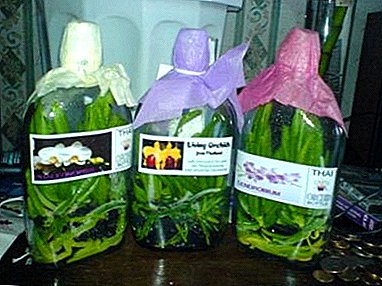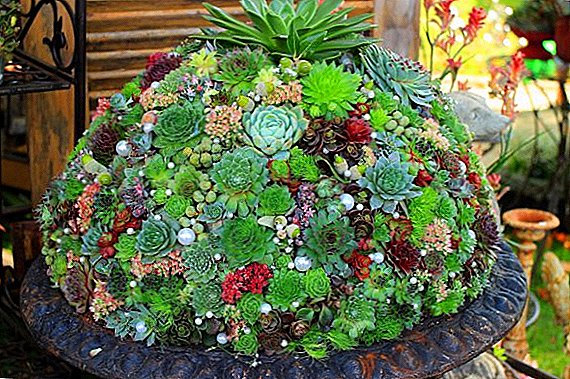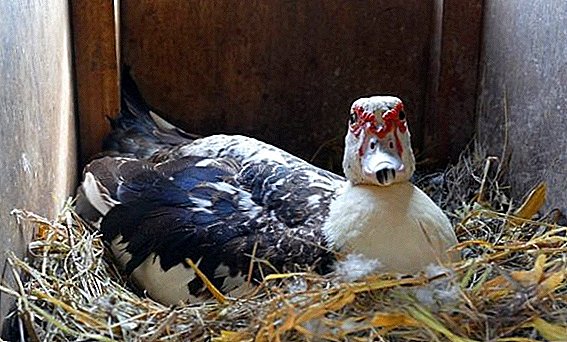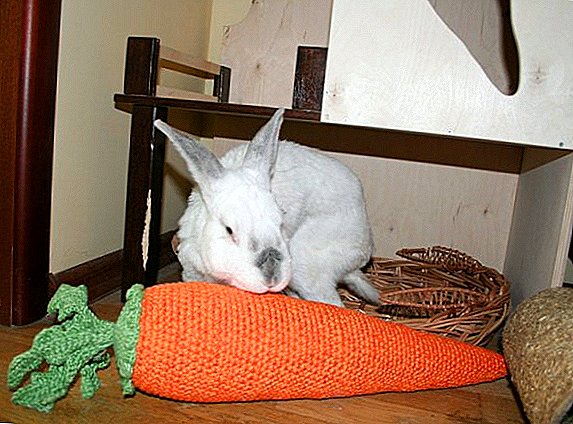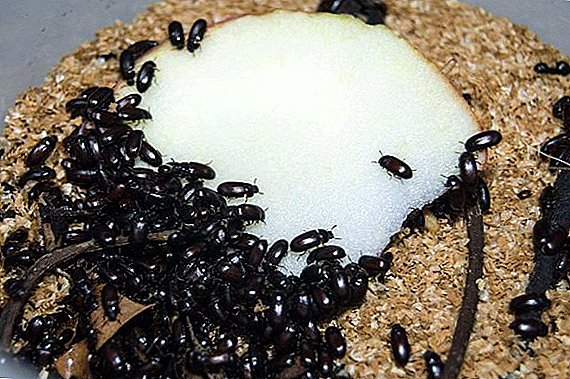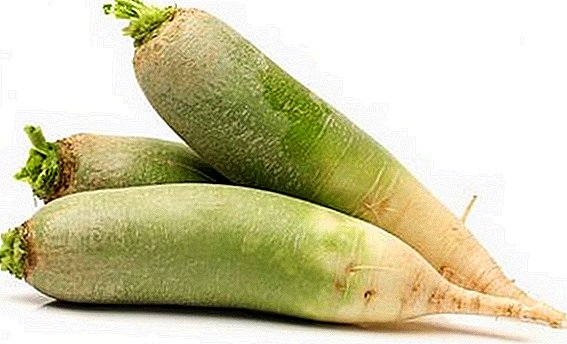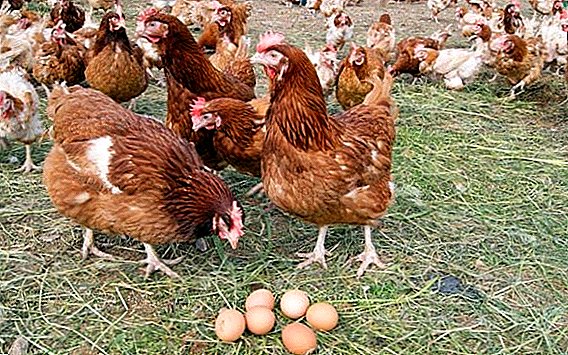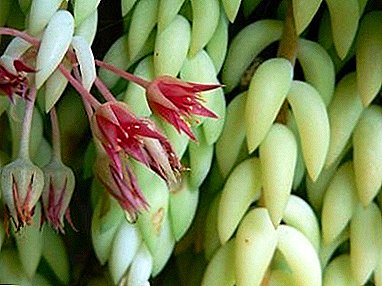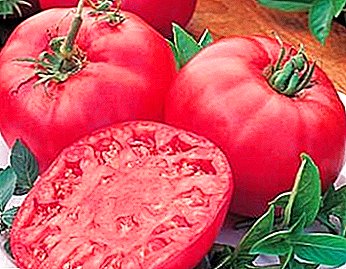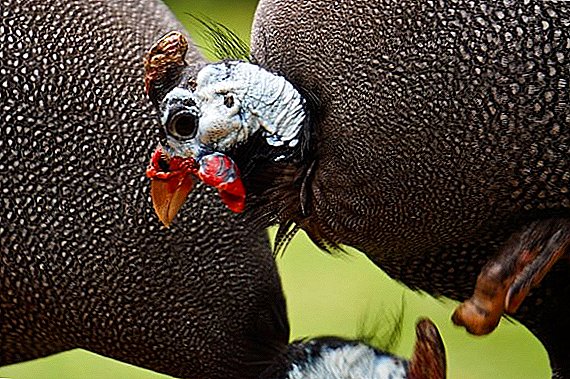 Guinea fowl was not always a poultry, to us it came from Africa, where the breed of guinea fowl was domesticated. Since then the guinea fowl is one of the popular birds in the household.
Guinea fowl was not always a poultry, to us it came from Africa, where the breed of guinea fowl was domesticated. Since then the guinea fowl is one of the popular birds in the household.
Did you know? Guinea fowl were popular during antiquity in Rome and ancient Greece.Guinea fowl meat has a peculiar taste that resembles pheasant meat, it’s not for nothing that Ivan the Terrible had meat of this bird to taste. In addition to tasty meat, guinea fowl eggs have healing properties.
Most often guinea fowls are grown in private yards and farms. About what breeds of guinea fowls are most often grown on our territory, as well as about the most common guinea fowls of wild breeds, this article will tell.
Breeds of domestic guinea fowls
Domestic guinea fowl is increasingly found in the courtyards of residents of the country. The characteristic of guinea fowl is rather "poor", this is due to the fact that there are still not so many species of domestic guinea fowl bred by breeders. Each breed of domestic guinea fowl has its own level of productivity and its specific features, which vary from the other breeds.
When choosing guinea fowl for your farm you should consider the following factors: productivity, ability to adapt to growing conditions, exterior qualities. Consider the most common breed of guinea fowls for growing at home.
Gray speckled
Gray-speckled, or popularly speckled guinea fowl, has long held a leading position in domestic poultry farming. With the advent of new breeds, the gray-speckled guinea fowl became less popular, but this did not diminish its benefits. In agriculture, there are currently no more than 3,000 adult representatives of this breed. The horizontal torso in the form of an elongated oval ends with a curved neck and a small head, on which there is practically no plumage.
In agriculture, there are currently no more than 3,000 adult representatives of this breed. The horizontal torso in the form of an elongated oval ends with a curved neck and a small head, on which there is practically no plumage.
On the head is visible a growth colored white with a blue patina. The beak of a guinea fowl of this species is dark pink in color, the earrings are red. The back of the guinea fowl falls slightly closer to the tail, which, in turn, is rather short and lowered downwards.
The wings of this species are rather large and well developed. If the neck is colored blue with a gray tinge, then the feathers are dark gray with a cross-striped pattern, the other feathers are decorated with white spots, for which this look got its name - speckled. The legs of this guinea fowl are short, painted in a dirty gray asphalt color.
Important! The weight of the female gray-speckled guinea fowl is slightly larger than the weight of the male - 1.7 and 1.6 kg, respectively.This breed does not require large expenditures on feed: per 1 kg of live weight will need 3.2-3.4 kilograms of feed. From the young bird, the first eggs can be collected already in 8-8.5 months, and then the puberty of the guinea fowl comes.
Eggs are harvested depending on the season, the average egg production period is 5-6 months. Egg mass reaches 45 g, shell color - cream. The output of the younger generation reaches 55% per season, and the safety of the young - up to 99%.
As for meat, in one bird 52% edible parts in relation to the live weight of guinea fowl. The taste quality of guinea fowl meat is quite high. For high fertilization, it is better to use artificial insemination methods, then the hatchability of eggs is about 90%.
Zagorsk white-breasted
White-breasted guinea fowls are distinguished by their specific color: The back and tail of representatives of this breed of the same color and pigmentation as in the gray-speckled guinea fowl, and the neck and abdomen are white, not marked with spots. This breed is very similar to the Siberian white guinea fowl, however the plumage of these birds is very fluffy and loose in structure.  The body of the Zagorian Guinea Fowl is elongated. The legs are dark gray and the short tail is down. On average, live weight reaches 1.7 kg in males and 1.9 kg in females. Up to 140 eggs weighing up to 50 g can be collected per year.
The body of the Zagorian Guinea Fowl is elongated. The legs are dark gray and the short tail is down. On average, live weight reaches 1.7 kg in males and 1.9 kg in females. Up to 140 eggs weighing up to 50 g can be collected per year.
Did you know? For breeding of this breed used 10 gray-speckled guinea fowls and four roosters. Interestingly, it was the feathering color of Moscow roosters that dominated.The safety of the young of this breed is quite high - up to 98%.
Siberian white
Siberian white guinea fowl are "mutants", bred after crossing common chicken with white plumage and gray-speckled guinea fowl. White guinea fowl with a creamy plumage and shiny white spots have a long body with an elongated keel and deep pectoral fossa. In females, the thoracic part is more developed than in males.  The skin of the body is white and pink. The head and neck are pale blue with a contrasting dark pink beak and red earrings. The paws of the Siberian white guinea fowl are short, of the same color as the beak.
The skin of the body is white and pink. The head and neck are pale blue with a contrasting dark pink beak and red earrings. The paws of the Siberian white guinea fowl are short, of the same color as the beak.
The mass of the male reaches 1.8 kg, and the females - up to 2 kg. Eggs reach a mass of 50 g, and on average in one year you can collect up to 100 eggs. These birds are quite unpretentious in their care and tolerate home cage conditions much more easily than other breeds.
The poultry meat of this breed is very gentle and tastes like chicken, which makes it even more attractive for breeding at home. It is possible to breed this breed both artificially, and naturally.
Cream (suede guinea fowl)
Cream (suede) guinea fowl - breed, which resembles the Siberian white Tsesarka in appearance, but differs in its smaller size and darker carcass color. The color of this breed is creamy white, sometimes even with a yellowish tinge. The mass of an adult male can reach 1750 g, and the mass of a female - 1650 g. The egg production of this breed is much lower than that of other breeds, although the laying period differs from the rest: it begins and ends earlier. The difference in weight is about 1-1.5 g. The eggshell is quite dense and can have a color from cream to brown. The hatchability of eggs reaches 70%.
The mass of an adult male can reach 1750 g, and the mass of a female - 1650 g. The egg production of this breed is much lower than that of other breeds, although the laying period differs from the rest: it begins and ends earlier. The difference in weight is about 1-1.5 g. The eggshell is quite dense and can have a color from cream to brown. The hatchability of eggs reaches 70%.
Important! Cream guinea fowls differ in the degree of pigmentation: highly pigmented, poorly pigmented and moderately pigmented.
Blue
Light brown background plumage with a purple and blue tint - It's about one of the rare breeds, about the blue goose. This breed has preserved to our times the shape of the body, characteristic of their ancestors. On the neck and abdomen there is a characteristic purple hue, without specks, and the feathers of the dorsal and tail parts are gray-blue with small white spots.  On the tail feathers, the white dots merge to form a transverse line.
On the tail feathers, the white dots merge to form a transverse line.
An adult male can reach 2 kg in weight, and a female 2.5 kg. The average egg weight is 45 g, and one adult bird can produce from 100 to 150 eggs per year. The shell is brown, may have a yellow or reddish tint. Small dots may appear on the surface of the egg.
Blue guinea fowls reproduce in a natural or artificial way, and the fertility of eggs reaches up to 75%. Blue guinea fowl is not very common in our territory, and today there are no more than 1,100 adult birds.
Volzhskaya white
Breed Volga white guinea fowl was bred from the gray-speckled breed. Especially these two breeds do not differ, only the color of the plumage.
Did you know? The breeding of this breed took place in several stages and ended in the Stavropol Territory, where later it became the most widespread.Now there are approximately 20,000 adult individuals. This species is represented by a bird with an elongated body, short legs. The small head is decorated with a beak of rich pink color with pale pink earrings.

The live weight of the female can reach 1.9 kg, and the male 1.6 kg. The egg production of the Volga white guinea fowl is 85-90 eggs per cycle, sometimes it can reach 100 eggs. Breeding of birds of this breed can be artificial and natural methods, hatchability eggs - 80% and 72%.
This breed is sold better due to its white plumage and the carcass itself. It is also popular because birds are better adapted to life even in the coldest regions of the country.
Blue lilac
 The guinea fowl of a breed a blue lilac in the productive qualities does not differ from a blue guinea fowl. The only difference is color. Feathers of the guinea fowl of this breed are painted in a rich indigo color, decorated with white dots, like in the blue guinea fowl. The neck and chest part are quite densely pubescent.
The guinea fowl of a breed a blue lilac in the productive qualities does not differ from a blue guinea fowl. The only difference is color. Feathers of the guinea fowl of this breed are painted in a rich indigo color, decorated with white dots, like in the blue guinea fowl. The neck and chest part are quite densely pubescent.
The adult female reaches 2.5 kg, and the male - 2 kg. On average, up to 150 eggs can be collected from one adult bird per cycle - this number can vary from housing conditions and food quality. The eggshell is very hard, and the mass of one egg reaches 45 g.
White
The white guinea fowl is distinguished by the completely white color of feathers, without any spots or points. The beak and earrings of this breed are painted using the ombre method - from bright pink to white at the very end. Closer to the tip, the head of this breed acquires a light gray color. The weight of the female is on average 1.8 kg, and the male 1.5 kg. For one season of egg production, you can get 90-100 eggs from one adult. Egg mass is 42-45 g, the shell is very hard, painted in yellow-brown color. The surface of the shell is dotted with small dots.
The weight of the female is on average 1.8 kg, and the male 1.5 kg. For one season of egg production, you can get 90-100 eggs from one adult. Egg mass is 42-45 g, the shell is very hard, painted in yellow-brown color. The surface of the shell is dotted with small dots.
Yellow
The birds of this breed are painted in a soft yellow color. On feathers there is no pearl "dusting". The color of the plumage changes on the neck and chest (in its upper part) and turns into yellow-red. As for the size of the bird, it does not differ from the white guinea fowl, and the other qualities of productivity in these two breeds are the same.
Types of wild guinea fowl
The wild guinea fowl is a bird that has been cultivated to a greater or lesser degree (depending on the breed). Outwardly, it looks like a domestic turkey, only smaller in size. These birds have not only a specific appearance, but their meat is excellent in taste and fully meets all the requirements for game meat.
Important! Wild guinea fowls live exclusively in fairly large flocks - from 20 to 30 individuals. They are more able to survive than domestic guinea fowls.
Griffon Guinea Fowl
Griffon guinea fowl seems special because of its bright plumage. The best countries to live in this bird are Kenya, Ethiopia and Somalia. Based on the rather harsh natural living conditions, the guinea fowl of this breed copes well with any conditions, since it does not require a lot of water and feed.  The griffon guinea fowl is a large bird, it can reach a height of up to 50 cm, with bright blue plumage, with black and white stripes on the feathers. Feathers have a violet glow.
The griffon guinea fowl is a large bird, it can reach a height of up to 50 cm, with bright blue plumage, with black and white stripes on the feathers. Feathers have a violet glow.
The name griffon is connected with the fact that the head of the guinea fowl and the head of the neck have approximately the same shape. The head is devoid of feathers, only a small “collar” of fluff on a long, thin neck. The beak of guinea fowl has an unusual shape: the upper part is longer and more curved.
This breed breeds in a natural way, and from one mating the female can carry from 8 to 15 eggs. Nestlings hatch in 25 days.
Did you know? The griffon guinea fowl does not build nests and lays eggs in pits dug in the ground.Griffon guinea fowls do not walk alone and move from place to place depending on the availability of water. Flocks are small, 20-30 individuals, but in some cases the number of birds can reach 70 individuals.
This breed of guinea fowl is quite shy birds that do not conflict with other breeds. Griffon guinea fowls in particularly emergency situations can fly a distance of 50 to 500 meters. They feed on nuts and plants, and most often in search of food they wander into dense thickets of bushes. In addition to plants, guinea fowl also eats various insects and snails.
Turkey Guinea Fowl
Representatives of turkey guinea fowls are extremely popular in zoos, and the turkey breed is one of the most popular among wild species. This breed is distinguished by the fact that it has a bare head, a rather long, thin neck, which is decorated with a white wreath of feather feathers.  The head and neck merge in colors: pink and red. White spots are found near the ears of this breed. The legs of the turkey guinea fowl are dark gray, almost black in color and rather short. The tail of the bird is directed downwards. An adult can reach 2 kg in weight.
The head and neck merge in colors: pink and red. White spots are found near the ears of this breed. The legs of the turkey guinea fowl are dark gray, almost black in color and rather short. The tail of the bird is directed downwards. An adult can reach 2 kg in weight.
This species feels perfectly in captivity, although the birds at home are quite shy.
Important! Each flock of turkey guinea fowl has a leader, on which lies the alert function when a predator is found nearby.Turkey guinea fowl that live in the wild, practically do not react to everything that happens around them, although the young individuals are rather shy. Guinea fowl - a very popular link in the food chain of animals such as hyenas, snakes, leopards, birds of prey.
For the night, guinea fowls choose tree branches. In hot weather, the birds sit in the thickets. The mating season begins with the first rains — this factor provides enough moisture for the next generation. The female always lays eggs in the same place, which the pair then guards until the chicks appear.
Curly Guinea Fowl
Curly guinea fowl often lives in the northern and eastern regions of the African continent. Best for the birds are suitable forests with young shrubs.
Curly guinea fowl has black feathers with blue spots. Under the eyes - red spots. In the red painted and the lower part of the head and neck. On the head there is a crest in the form of a cap, assembled from soft feathers. Birds of this breed are increasingly found in zoos, where they can be bought for breeding at home. It is very important to have a large space for the guinea fowl of this breed, because they hardly sit in one place.
Birds of this breed are increasingly found in zoos, where they can be bought for breeding at home. It is very important to have a large space for the guinea fowl of this breed, because they hardly sit in one place.
This bird does not build nests, but simply lays eggs in a hole under a bush. Usually the female lays from 9 to 13 light yellow eggs with spots a shade two darker in a season. Chicks live with their parents for a whole year until the next nesting. Most often, the guinea fowl falls prey to predators. There may be up to 100 individuals in a flock.
Did you know? As a rule, the oldest male becomes the leader of the pack.Curly guinea fowl feeds on insects, herbaceous plants and various grains, and from time to time birds can feed on field mice. Drought is not terrible for this breed, the bird can eat dry grass, and as for water, most of its guinea fowl comes from food.
Crested guinea fowl
Crested guinea fowls are often also called comb. This is explained by the fact that on the head of this breed there is a small crest-cap of bunched feathers. In general, the head is colored blue with a gray tint.  The neck is covered with black feathers with a blue tint. The feathers around the neck closer to the tip are drop-shaped and, due to the white spots, form a kind of collar. Feathers of black color give blue and decorated with small white specks. The main part of the beak is light blue, and the tip is yellow. Paws of blue color with a blue shade.
The neck is covered with black feathers with a blue tint. The feathers around the neck closer to the tip are drop-shaped and, due to the white spots, form a kind of collar. Feathers of black color give blue and decorated with small white specks. The main part of the beak is light blue, and the tip is yellow. Paws of blue color with a blue shade.
An adult individual of the crested guinea fowl can reach 55 cm. Birds live in flocks, and one flock can number from 50 to 100 representatives. Guinea fowl eggs are laid in the pits, at a time - up to 10-12 pear-shaped eggs. Chicks appear in 23 days. Both parents guard the nest.
Important! In order for the crested guinea to feel comfortable at home, it is better for her to arrange a large aviary with a landscape.
Brush guinea fowl
The guinea fowl has black plumage with blue hues and is decorated with white dots. These guinea fowls are most widely represented in Northeast Africa, Ethiopia and Somalia. This breed has a rather short neck. On the head of the bird are blue earrings and a yellow comb, formed from short yellow feathers.  Birds, like the rest of the guinea fowls, live in flocks and do not build nests. In one season, 8 to 12 eggs hatch. Hatching eggs range from 20 to 25 days. Most often this breed is found in zoos.
Birds, like the rest of the guinea fowls, live in flocks and do not build nests. In one season, 8 to 12 eggs hatch. Hatching eggs range from 20 to 25 days. Most often this breed is found in zoos.
Guinea fowl - a rather rare guest in the farms of farmers, but this bird certainly deserves attention in the management of the farm. They will provide you with not only tasty and high-quality meat, but also decorate your yard with their exotic look.


